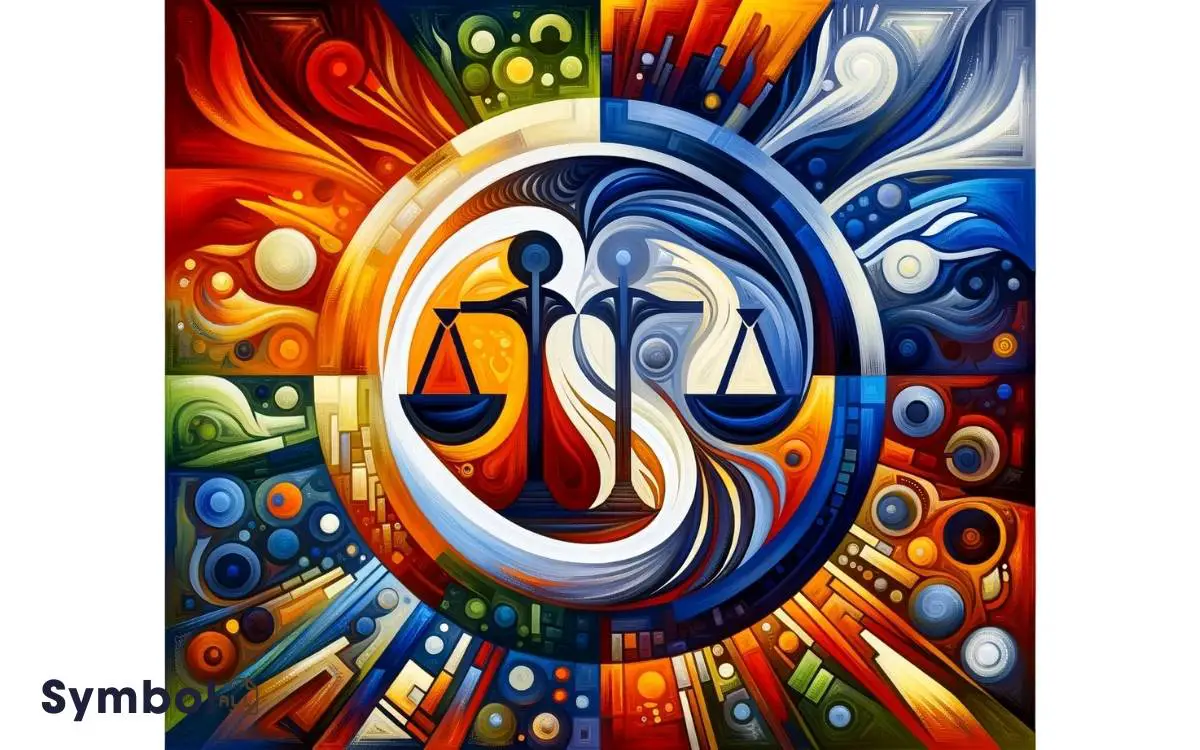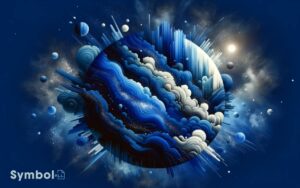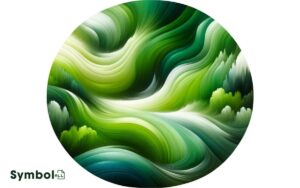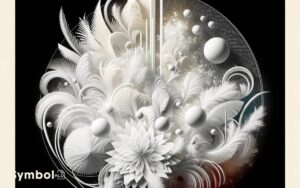What Color Is the Jedi Order Symbol? Brown, Green!
The Jedi Order symbol embodies values of peace, integrity, and courage through its colors.
Brown and beige ground the symbol, connecting it to all living things, while white emphasizes purity and the Jedi’s commitment to harmony.
Green reflects growth, renewal, and the Force’s life-giving nature. Blue stands for serenity and wisdom, indicating protection and defense.
Each color isn’t just a choice; it’s a message, reminding you of the Jedi’s pursuit of enlightenment and their role as guardians of peace across the galaxy. As you explore further, you’ll uncover more about how these colors weave into the Jedi legacy.

Key Takeaways
The Symbols Origins
How did the iconic symbol of the Jedi Order, recognized across the galaxy for its representation of peace and justice, come to be? You’re diving into a tale woven from the threads of ancient lore and galactic history.
The symbol, comprising a shining starburst surrounded by wings, embodies the Jedi’s role as guardians of peace in the Galactic Republic. It’s not merely an emblem; it’s a profound declaration of the Order’s ethos.
Scholars suggest that the design was inspired by early Jedi who viewed their mission as bringing light to dark places, the wings symbolizing their reach across the cosmos.
This emblem, evolving over millennia, became a beacon of hope and a reminder of the Jedi’s commitment to serve and protect.
Every curve and line in the symbol carries the weight of this legacy, meticulously crafted to resonate with those who understand its significance.
Color Significance
You’ve learned about the origins of the Jedi Order symbol; now, let’s turn our attention to its colors’ deeper meanings.
The hues chosen aren’t essential, as they reflect core Jedi values such as peace, integrity, and courage, which are vital to understanding the Jedi’s role within the Star Wars universe.
Through an analysis of the symbolic colors , we can uncover how these elements not only represent Jedi principles but also create a profound cultural impact, resonating with audiences worldwide.
Symbolic Colors Explained
When investigating the Jedi Order symbol, it’s essential to explore into the importance of its colors, each carefully selected to mirror the fundamental principles and beliefs of the Order.
The predominant use of brown and beige in the symbol represents grounding, reflecting the Jedi’s connection to all living things and their humble approach.
White, another key color, symbolizes purity and peace, highlighting the Jedi’s ultimate goal of maintaining harmony throughout the galaxy. The subtle inclusion of green speaks to growth, renewal, and the Force’s life-giving nature.
Each color choice isn’t accidental but a deeply thought-out representation of the Jedi’s ethos, meticulously woven into the fabric of their identity, guiding their actions and decisions across the galaxy.
Jedi Values Representation
Delving deeper into the Jedi Order’s emblem, it’s clear that the chosen colors not only decorate but profoundly signify the core values and virtues upheld by the Jedi, such as peace, knowledge, and self-discipline.
For instance, the color blue often seen in the symbol, represents serenity and wisdom, qualities every Jedi endeavors to embody.
This choice isn’t arbitrary but deeply rooted in the lore of the Star Wars universe, where blue is associated with the light side of the Force, embodying protection and defense rather than aggression.
Similarly, white, another prominent color, signifies purity and the Jedi’s commitment to maintaining balance and peace, devoid of personal ambition.
Each color serves as a constant reminder of the path a Jedi chooses to walk a life dedicated to the greater good and the pursuit of enlightenment.
Cultural Impact Analysis
Exploring the cultural impact of the Jedi Order symbol’s colors reveals how deeply these hues resonate with societal values and historical symbolism, echoing the age-old association of blue and white with wisdom, purity, and peace across various cultures. This connection is further emphasized when considering lightsaber colors and their meanings, as the blades wielded by Jedi often reflect the values and traits of their bearers—blue signifying bravery and protection, and green symbolizing harmony and a strong connection to the Force. The consistent use of blue and white in the Jedi Order symbol not only complements these ideals but also reinforces the timeless narrative of hope and virtue that the Jedi represent. This interplay of colors and their significance serves as a unifying thread, bridging fictional lore with enduring cultural principles.
- Blue symbolizes trust, loyalty, and confidence, qualities inherent in the Jedi’s mission to maintain peace and order.
- White represents light, goodness, and innocence, mirroring the Jedi’s pursuit of righteousness and their role as guardians of peace in the galaxy.
- Combination of Blue and White signifies unity and harmony, reflecting the Jedi’s commitment to bringing balance to the Force and the universe.
These colors not only define the Jedi Order’s ethos but also connect them to universal values recognized across the globe, underscoring the timeless appeal of their symbol.
Representation in Films
You’ve seen the Jedi Order symbol flash across the screen in various Star Wars films, each appearance rich with historical and ideological weight.
The symbol’s color evolution, from its original depiction to its nuanced shades in later trilogies, mirrors the shifting ethos within the Jedi ranks.
Analyzing these variations across films offers a deeper understanding of the Jedi’s role and perception in the galaxy far, far away.
Symbols Film Appearances
The Jedi Order symbol, a beacon of hope and guardianship, reveals its presence across various films in the Star Wars saga, each appearance carrying significant thematic weight.
When you explore the films, you’ll observe the symbol’s strategic placements and evolving significance:
- Star Wars: Episode II – Attack of the Clones: Here, it adorns the Jedi Temple, symbolizing the Order’s central role in the Galactic Republic and the impending challenges they face.
- Star Wars: Episode III – Revenge of the Sith: It tragically marks the graves of fallen Jedi, underscoring the Order’s decimation and the dark times ahead.
- Star Wars: Episode VI – Return of the Jedi: Its return signifies hope and the rebirth of the Jedi Order, aligning with the film’s themes of redemption and renewal.
Each film carefully integrates the symbol to deepen the narrative and connect audiences with the Jedi’s enduring legacy.
Color Significance Explained
Delving into the hues of the Jedi Order symbol reveals a tapestry of meanings that enrich its narrative presence within the Star Wars saga.
The colors associated with this emblem aren’t just aesthetic choices; they’re deeply symbolic, reflecting the core principles and the ethos of the Jedi philosophy.
| Color | Significance |
|---|---|
| Blue | Peace, serenity, and the defense of the innocent. |
| Green | Growth, harmony, and a connection to the living Force. |
| White | Purity, truth, and the light side of the Force. |
| Gold | Wisdom, respect, and the high ideals of the Jedi Order. |
Each color serves as a narrative device, subtly communicating the Jedi’s role and values within the galaxy, further enhancing the rich storytelling tapestry of the Star Wars universe.
Variations Across Trilogies
Throughout the Star Wars trilogies, the Jedi Order symbol’s representation has subtly evolved, reflecting shifts in narrative themes and the characters’ journeys.
You’ve seen this symbol become a beacon of hope and a target for destruction, but did you notice the variations across the films?
Here’s a closer look:
- Original Trilogy: Initially, the symbol is rare, embodying the Jedi’s near-extinction and symbolizing their hidden legacy.
- Prequel Trilogy: Its prominence grows, displayed in the Jedi Temple and on starfighters, indicating the Order’s strength and public presence.
- Sequel Trilogy: The symbol turns personal, carried by individual characters like Rey, representing a shift from an institutional symbol to a personal emblem of resilience and hope.
These changes aren’t just aesthetic; they’re deeply tied to the evolving story of the Jedi within the galaxy.
Variations Across Media
One might notice that the Jedi Order symbol undergoes subtle yet significant variations when it appears across different media, reflecting the unique contexts and artistic visions of each domain.
In the domain of animated series like ‘The Clone Wars’ and ‘Rebels,’ the symbol often adopts a more stylized form, its lines streamlined for animation, making it instantly recognizable yet distinctly different.
Contrastingly, in video games such as ‘Knights of the Old Republic,’ the symbol is rendered with intricate detail, highlighting its historical significance within the expanded universe.
These adaptations underscore the flexibility of the symbol’s design, allowing it to resonate across a vast array of media while maintaining its core identity. Each variation not only serves the aesthetic of its medium but also enriches the lore surrounding the Jedi Order.
Symbolic Interpretations
The Jedi Order symbol, rich in layers and meaning, invites you to explore its deeper symbolic interpretations, revealing insights into the Order’s philosophy and values.
This emblem, more than just an insignia, offers a window into the core principles that guide the Jedi:
- The Wings: Symbolizing hope and enlightenment, they reflect the Jedi’s role as guardians of peace and justice in the galaxy.
- The Lightsaber: At the center, it signifies the tool and weapon of the Jedi, embodying their commitment to defense and their readiness to fight darkness.
- The Circle: Encapsulating the wings and lightsaber, the circle represents unity and completeness, echoing the Jedi’s pursuit of balance within themselves and the Force.
Each element combines to convey a profound narrative of the Jedi Order’s enduring legacy and mission.
Real-World Merchandise
Exploring the symbolic depths of the Jedi Order symbol naturally leads us to ponder its manifestation in real-world merchandise, where each product embodies the rich legacy and values of the Order.
You’ll find the symbol on a plethora of items, from clothing and accessories to home decor and collectibles. T-shirts and hoodies often feature the emblem prominently, connecting wearers to the Jedi’s principles of peace and justice.
Action figures and toys, meticulously crafted, allow fans to bring a piece of the Star Wars universe into their homes.
Analyzing these products reveals a thoughtful consideration of color usage, with many opting for a traditional palette that emphasizes the symbol’s origins and significance.
This strategic choice in merchandise design not only honors the Jedi legacy but also deepens fans’ connection to the saga.
Evolution Over Time
Over time, the Jedi Order symbol has undergone subtle yet significant transformations, reflecting shifts in design philosophies and storytelling approaches within the Star Wars saga. These changes aren’t just cosmetic; they serve as markers of the Jedi’s evolving legacy.
To grasp the depth of its evolution:
- Early Iterations: Initially, the symbol was simpler, focusing on the wings and the shining light, representing the Jedi’s role as keepers of peace.
- Prequel Enhancements: With the prequels, the design gained complexity, symbolizing the Order’s expanded lore and nuanced moral grounds.
- Sequel Refinements: The latest films introduced sharper angles and more dynamic elements, mirroring the Jedi’s tumultuous journey and resilience.
Each phase embodies the era it represents, offering fans a visual breadcrumb trail of the Jedi’s enduring saga.
Conclusion
In the vast expanse of the Star Wars universe, the Jedi Order‘s symbol stands as a beacon of hope, its color often depicted in a striking gold against the backdrop of space’s inky blackness.
This juxtaposition isn’t just visually arresting; it’s a profound reminder of the light fighting against the darkness, a core theme of the saga.
Over time, this emblem has evolved, weaving through different media and merchandise, yet its essence remains unchanged.
Analyzing its variations reveals a rich tapestry of meaning, reflecting the enduring legacy and complex philosophy of the Jedi Order itself.






